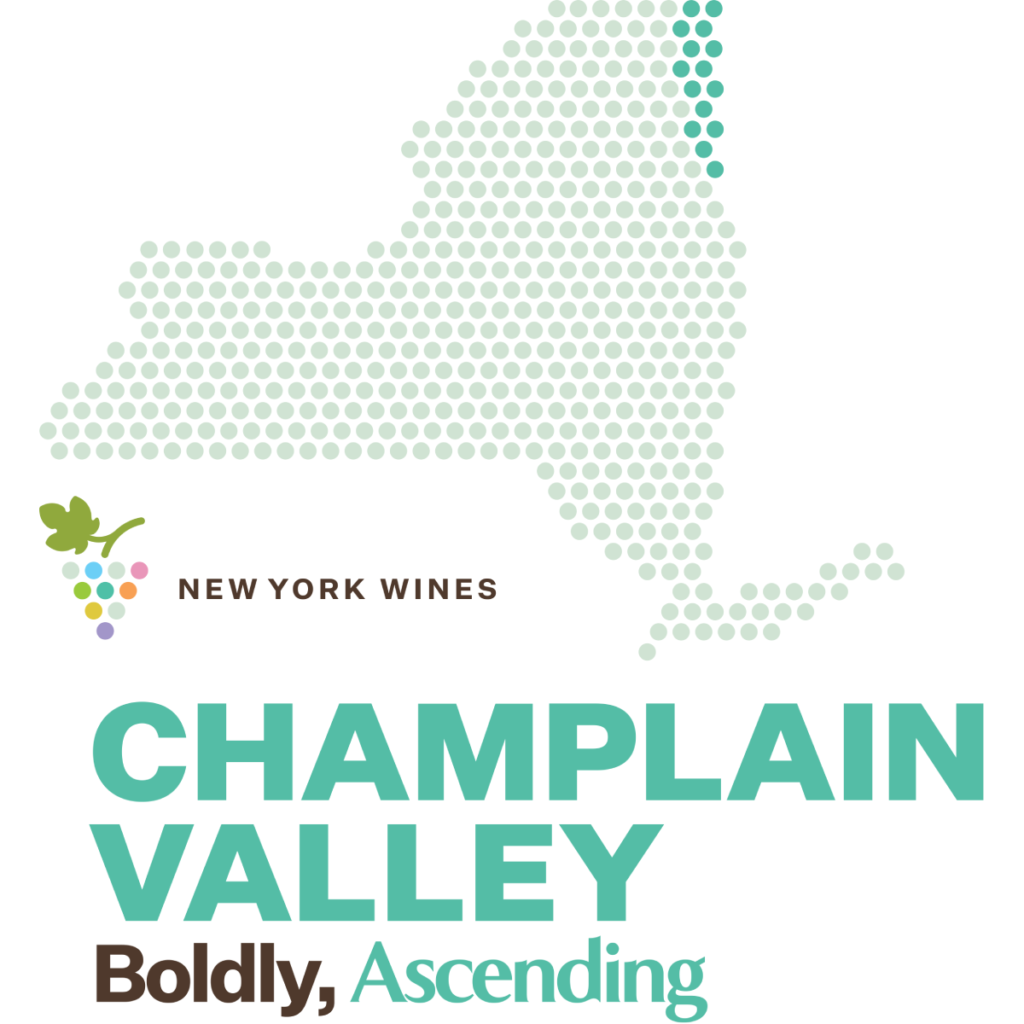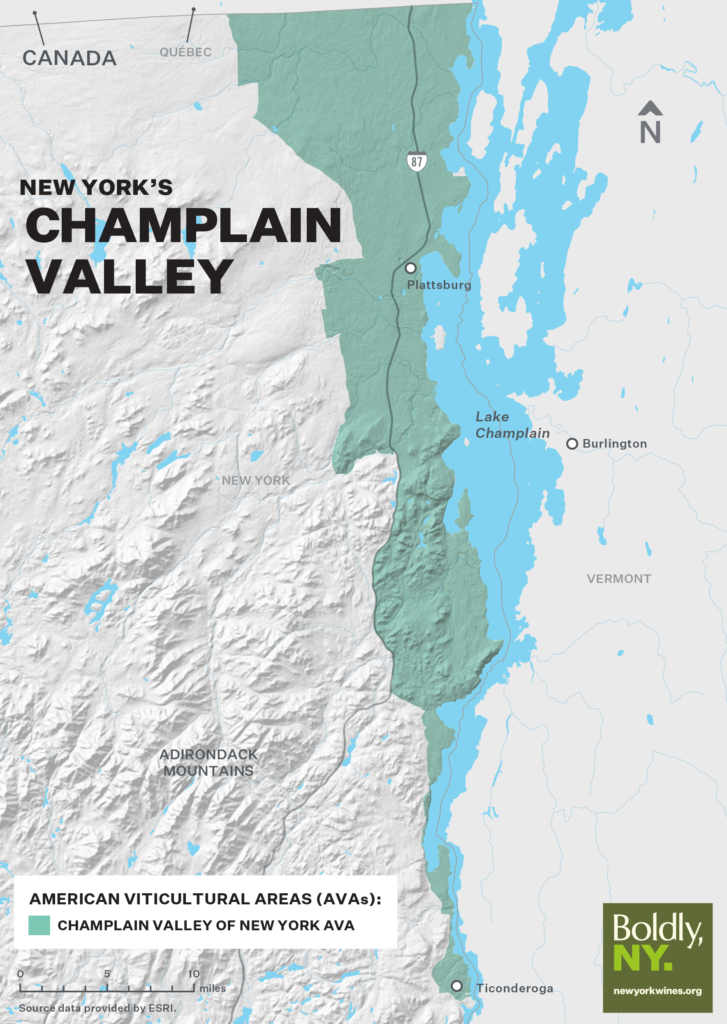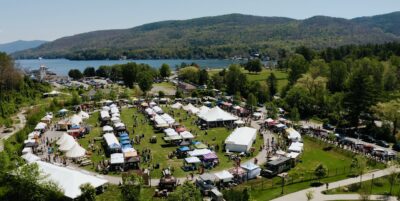
The Champlain Valley in northeastern New York is bordered by the Adirondack Mountains to the west, the Green Mountains of Vermont to the east, the Taconic Mountains to the south, and Canada to the north. While the Hudson River drains south to New York City and the Atlantic Ocean, Lake Champlain flows north to the St Lawrence River. Lake Champlain has a surface area of 435 square miles, but spans 12 miles at its widest, with a maximum depth of 400’. The Champlain Valley of New York AVA recognizes the cool-climate and short growing season, owing to the physiography of the relatively flat valley and surrounding mountains.
The physiographic region of the Champlain Basin starts about 30mi south of Montreal, Quebec, stretching approximately 140 miles south and encompassing 8,234 square miles. The Champlain Basin is 37% within New York State, 56% Vermont and 7% Quebec, Canada. The Champlain Lowlands or “Champlain Valley” is contained within the basin. The AVA lies entirely within the Champlain Lowlands.
Geology
During the last Ice Age, the region was covered by ice over a mile thick. As the Laurentide Ice Sheet retreated about 13,500 years ago, the land slowly rebounded. An ice dam formed at the northern boundary, creating the glacial Lake Vermont from the waters that flowed north. About 12,000 years ago the ice dam broke, thereby draining the lake by some 300’ of depth to 200’ in a short period.
This dramatic event enabled sea water from what is now the St Lawrence River to enter and form the brackish Champlain Sea; in effect, a temporary inlet of the Atlantic Ocean.
As the land rose the northern inlet was cut off, and gradually the salty, brackish water became fresh from the waters draining from the surrounding lands and forming the present day Lake Champlain.
The region lies within a relatively flat valley between the Adirondack Mountains to the west and Lake Champlain and Green Mountains to the east. The underlying bedrock and soils based on glacial silt and sediments and erosion from the Adirondacks are relatively homogeneous.
The soils are mostly a combination of sand and clay with little organic matter. They are rich in minerals and tend to be well drained.
Climate
The region lies within the wind and rain shadow of the Adirondack Mountains. Because of this, the prevailing westerly winds that sweep across Lake Champlain warm the lands to the west—not the AVA. The distinguishing features of the Champlain Valley of New York AVA is its short growing season and cold climate.

Quick Facts
About the Champlain Region
- Established August 22, 2016
- 7 Wineries
- 160 Day Growing Season
- 21 Farms, 122 Acres of Vineyard
- Hybrids, Natives, Small plantings of Vitis vinifera
Region map
Explore More New York Wine Country:


